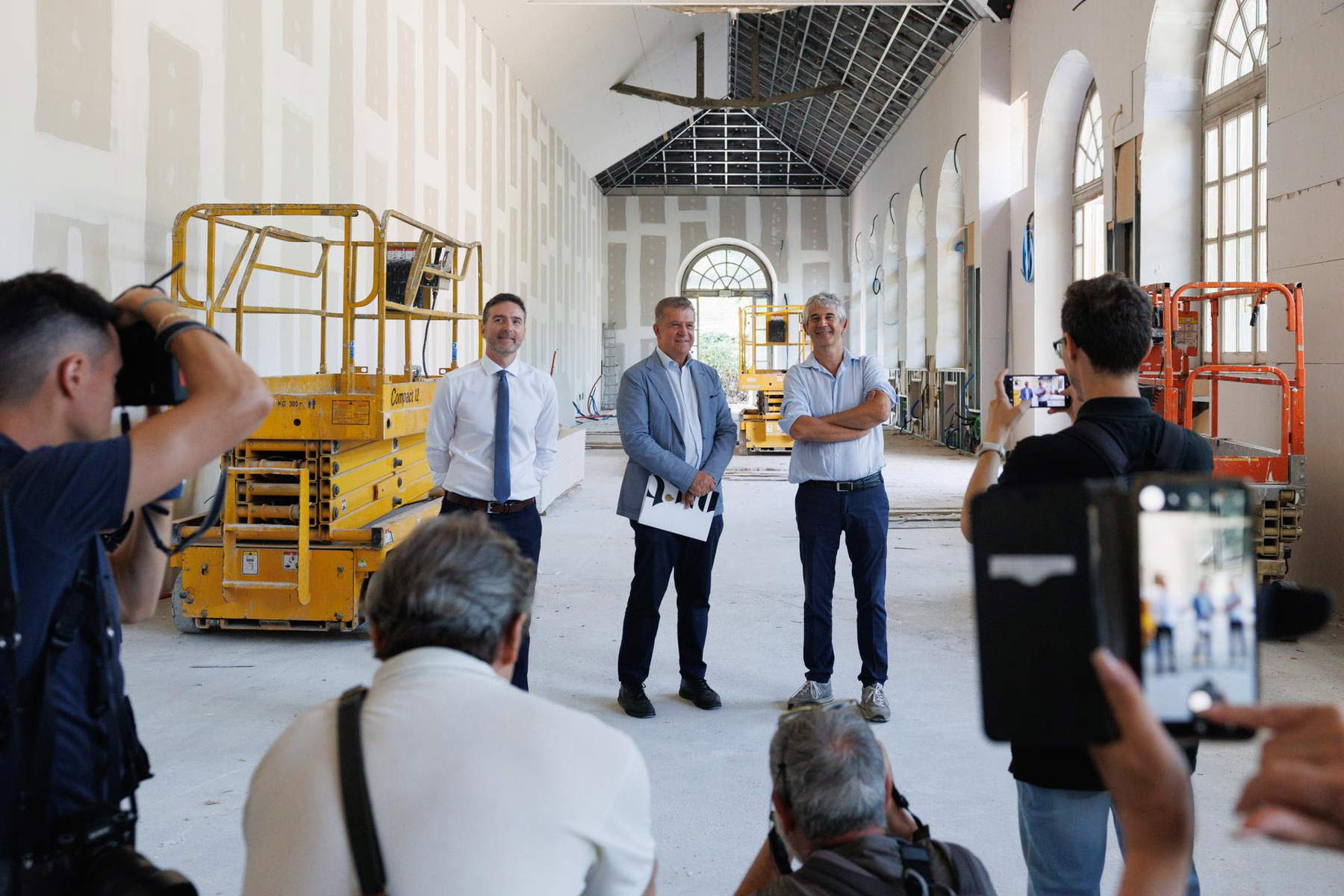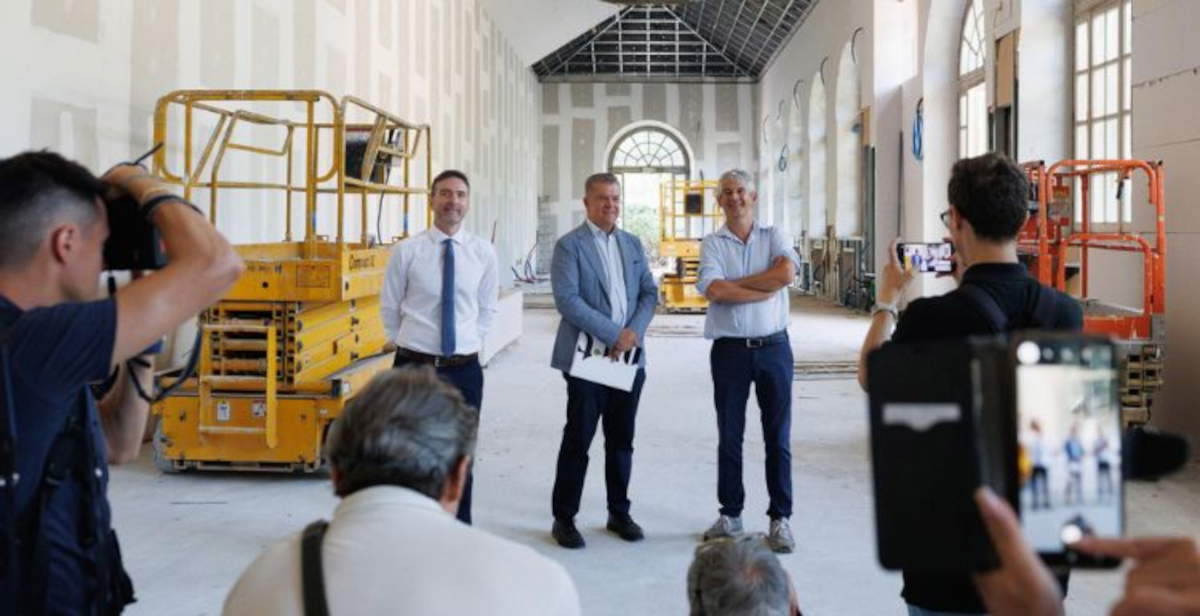The extensive program of interventions that is affecting the entire Royal Museums of Turin complex continues, with worksites active on several fronts, from the Royal Palace to the Sabauda Gallery, from the Library to the Armory, from the Royal Gardens to the archaeological area. A total investment that exceeds 28 million euros, coming from a variety of sources: the Ministry of Culture, the National Recovery and Resilience Plan (PNRR), bank foundations and Art Bonus initiatives. The Hall of the Swiss Guards hosted a meeting to take stock of the progress of the work. The interventions concern both heritage conservation and the technological and functional upgrading of spaces, with the aim of enhancing accessibility, energy efficiency and usability of museum routes.
“These interventions represent not only an investment in cultural heritage, but a commitment to the community, accessibility, sustainability and innovation,” says Mario Turetta, Deputy Director of the Royal Museums of Turin. “2025 is a year of great transformation for the Royal Museums, with visible and participatory building sites, under the banner of transparency and public involvement. Thanks to the synergy between public funds and private support, we are giving back to the city and the country one of the largest and most significant museum complexes in Europe, ready to welcome citizens, tourists and new generations.”
The route ideally starts from Pelagio Palagi’s monumental gate on Piazzetta Reale, which is undergoing extraordinary maintenance, 20 years after the previous intervention. The work, financed with 400,000 euros from Law 190/2014, includes three-dimensional surveys, analysis of degradation, cleaning and structural consolidation, along with the restoration of the equestrian statues of the Dioscuri. The Court of Honor is affected by more interventions: 150,000 euros of extraordinary ministerial funds and 663,510 euros from PNRR Tourism and Culture allow the closure of the portico between the ticket office, bookshop and entrance staircase, with the installation of new window frames in line with the original nineteenth-century stained-glass windows and the improvement of reception spaces. The first batch, which has already been completed, involved upgrading the atrium and the south sleeve of the portico. The securing of the west portico and the San Giovanni hallway will be completed with an additional ministerial grant of 500,000 euros.
On the facades front, after the restoration of the central portion facing the Ducal Garden (1,001,840 euros from Law 205/2017), work will continue on the two side towers, financed with 1,036,238 euros from Law 190/2014.
The Royal Gardens are also involved in the redevelopment works. The Green Bastion, a 16th-century structure on the northeastern edge of the Roman walls, will be restored and refunctionalized thanks to a total contribution of 825,200 euros from the Ministry of Culture, Art Bonus and the CRT Foundation. The bastion will become an information center on the relationship between gardens and architecture, host events, educational workshops, a bookshop and a food court. The project, which has already been validated, also includes the elimination of architectural barriers.
On the tour route, one of the interventions concerns the Royal Library, which is being worked on for accessibility and digitization. PNRR’s 500,000 euros have been used for access ramps and a new elevator to the vaults that hold Leonardo da Vinci’s drawings. Digitization of 187 incunabula and 240 manuscripts, amounting to about 90,000 images, is also underway. Archiving will be done through platforms such as Comwork, Sbnweb and Manus.

Two interventions planned with funds from Law 190/2014 (€196,230 and €150,450) will concern the Library’s storerooms, with the renovation of the sewage system. Another 121,900 euros from the Compagnia di San Paolo will be used for the construction of the sidewalk in the Giardino di Levante and related waterproofing. Once the work is completed, the shelving will be restored.
Significant NRP resources (900,000 euros) are earmarked for the Royal Armory and the adjacent Medagliere and Rotunda rooms, which are undergoing energy upgrades. Summer cooling, a new lighting system and the installation of low-emissive films on the windows are planned. More than 4,000 objects not currently on display will be placed in the Ormea Tower, thanks to two museum storage facilities. The first is already operational with funds from Law 205/2017, the second will be completed with 140,130 euros from Law 190/2014.
Among the rooms in the Royal Palace undergoing interventions is the Staff Room. Funded with 399,340 euros, the worksite will start in the fall and will affect ceilings, friezes, furniture and the large canvas by Amanzio Prelasca from 1660. Tapestries depicting the Stories of Aeneas will be restored in a workshop that can be visited on the second floor. In 2026, the chandelier will be restored, the textile wallpaper replaced, and the flooring restored.
As part of the Adopt a Portrait project, with 159,740 euros from Art Bonus and the CRT Foundation, the restoration of the floor and chandeliers in the Daniel Gallery has been completed. The Take Care plan (501,000 euros), co-financed through Art Bonus and the PRIMA Call for Proposals, started maintenance of the wooden and gilded decorations in the Noble Apartments in the first half of 2025. Work was also carried out on the sculptural apparatus of the Giardino di Levante and the marbles of the Birago terrace. The next interventions will affect the Bastions on the Royal Greenhouses, the Scalone d’Onore, and the Royal Chapel.
In the Sabauda Gallery, the refurbishments begun in 2023 are being completed, with 290,000 euros from Law 190/2014. The renovation of the didactic apparatus and the restoration of the works anticipate the return on display of two paintings by Guglielmo Caccia, known as Moncalvo, purchased in 2025 with ministerial funds on the occasion of the fourth centenary of his death.
On the archaeological front, the Royal Museums aim to enhance integration between the early Christian Basilica of the Savior and the museum section devoted to Turin archaeology. A new internal passageway will connect the underground rooms of the Manica Nuova with the excavation area, also opening a gap to the Roman road. The remains of the Roman Theater will be visible and a space dedicated to Alfredo D’Andrade will be set up. The finds will be displayed in a pathway that puts original objects and structures in dialogue.
55,000 euros from Law 190/2014 will be used to work on the Territory Pavilion of the Museum of Antiquities, with repairs to the roof and a study for energy efficiency. Finally, an extraordinary funding of 1,450,000 euros will allow the upgrading of electrical, computer and video surveillance systems, as well as the replacement of the fire-fighting system.
One of the most significant interventions concerns the Royal Greenhouses, pavilions in the Lower Gardens that until a few years ago housed the Museum of Antiquities. With 12 million euros from CIPE and 880,000 euros from the Compagnia di San Paolo Foundation, they will be transformed into a new museum center with air-conditioned storage rooms, restoration laboratories, conference rooms, educational spaces, green areas and new services for the public.
 |
| Construction sites at the Royal Museums of Turin: more than 28 million for accessibility, restoration and security |
Warning: the translation into English of the original Italian article was created using automatic tools. We undertake to review all articles, but we do not guarantee the total absence of inaccuracies in the translation due to the program. You can find the original by clicking on the ITA button. If you find any mistake,please contact us.